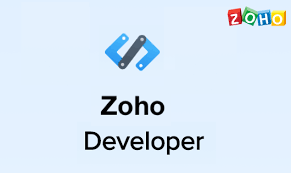As businesses grow, their accounting needs evolve. Switching to a more robust accounting solution like Zoho Books can streamline financial management processes. However, migrating data from an existing system to Zoho Books Migration requires careful planning and execution. In this guide, we’ll explore the steps involved in migrating to Zoho Books and how to ensure a smooth transition.
Why Migrate to Zoho Books?
Zoho Books offers a range of features that can benefit businesses, including invoicing, expense tracking, and inventory management. Migrating to Zoho Books can centralize financial data, improve accuracy, and provide better insights into business finances.
Steps to Migrate to Zoho Books
1. Evaluate Your Current Accounting System
- Assess the data in your existing accounting system, including accounts, transactions, and reports.
- Identify any customization or integration requirements for Zoho Books.
2. Prepare Your Data for Migration
- Clean up your data to ensure accuracy and consistency.
- Export data from your existing system in a format compatible with Zoho Books (e.g., CSV, Excel).
3. Set Up Your Zoho Books Account
- Create a Zoho Books account if you don’t already have one.
- Configure your account settings, including currency, taxes, and payment terms.
4. Import Your Data into Zoho Books
- Use the Zoho Books import tool to upload your data files.
- Map the fields in your data files to the corresponding fields in Zoho Books.
5. Verify Data Accuracy
- Review the imported data in Zoho Books to ensure accuracy.
- Reconcile accounts and verify balances to ensure data integrity.
6. Customize Zoho Books
- Set up custom fields, templates, and workflows in Zoho Books to match your business needs.
- Configure integrations with other systems, such as CRM or inventory management software.
7. Train Your Team
- Provide training to your team on how to use Zoho Books effectively.
- Ensure they understand the new processes and workflows.
Tips for a Smooth Migration
- Plan ahead and allow sufficient time for data preparation and testing.
- Backup your data before starting the migration process.
- Test the migration process with a small subset of data before migrating all your data.
- Communicate with your team throughout the migration process to ensure they are prepared for the changes.
Conclusion
Migrating to Zoho Books can streamline your accounting processes and provide better visibility into your finances. By following these steps and best practices, you can ensure a smooth transition to Zoho Books and start enjoying its benefits sooner.


